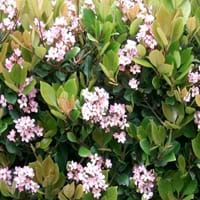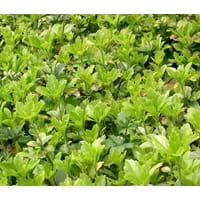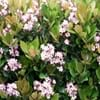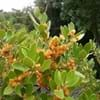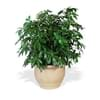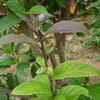Life Span
Annual and Perennial
Perennial
Type
Broadleaf Evergreen
Broadleaf Evergreen
Origin
Eastern Asia
China, Japan
Types
Not Available
Pachysandra procumbens, Pachysandra terminalis
Number of Varieties
Not Available
Habitat
gardens, Roadsides, Urban areas, Waste areas
Deep, Hardwood forests, moist forests, Terrestrial
USDA Hardiness Zone
Not Available
4-8
AHS Heat Zone
Not Available
Not Available
Habit
Oval or Rounded
Prostrate/Trailing
Minimum Height
Not Available
Minimum Width
Not Available
Flower Color
White, Red, Pink
White
Flower Color Modifier
Bicolor
Bicolor
Fruit Color
Blue, Purple, Dark Blue, Blue Violet, Black
Not Available
Leaf Color in Spring
Green, Orange, Dark Green, Bronze
Dark Green
Leaf Color in Summer
Green, Dark Green
Dark Green
Leaf Color in Fall
Green, Dark Green
Dark Green
Leaf Color in Winter
Green, Dark Green
Dark Green
Plant Season
Spring, Summer, Fall, Winter
Spring, Summer, Fall, Winter
Sunlight
Full Sun, Partial Sun
Partial shade, Full Shade
Growth Rate
Medium
Medium
Type of Soil
Clay, Loam, Sand
Loam
The pH of Soil
Acidic, Neutral
Acidic, Neutral
Soil Drainage
Well drained
Well drained
Bloom Time
Early Spring, Spring, Late Spring, Early Summer, Summer, Winter, Late Winter
Late Spring, Early Summer
Tolerances
Drought, Salt
Not Available
Where to Plant?
Ground, Pot
Ground
How to Plant?
Seedlings, Stem Planting
Rooted stem cutting, Seedlings, Stem Cutting
Plant Maintenance
Medium
Medium
Watering Requirements
Keep ground moist, Requires watering in the growing season, Water when soil is dry
Needs more water during establishment
In Summer
Lots of watering
Lots of watering
In Spring
Moderate
Moderate
In Winter
Average Water
Average Water
Soil pH
Acidic, Neutral
Acidic, Neutral
Soil Type
Clay, Loam, Sand
Loam
Soil Drainage Capacity
Well drained
Well drained
Sun Exposure
Full Sun, Partial Sun
Partial shade, Full Shade
Pruning
Cut or pinch the stems, Prune if you want to improve plant shape, Requires very little pruning, Shape and thin as needed
Remove damaged leaves, Remove dead branches, Remove dead leaves
Fertilizers
All-Purpose Liquid Fertilizer
All-Purpose Liquid Fertilizer
Pests and Diseases
Fungal Diseases, Insects
Alternaria leaf blight, Red blotch, Stem rot
Plant Tolerance
Drought
Drought
Flowers
Showy
Insignificant
Flower Petal Number
Not Available
Single
Edible Fruit
Not Available
No
Foliage Texture
Medium
Medium
Foliage Sheen
Glossy
Glossy
Attracts
Bees, Birds, Butterflies
Ants, pollinators
Allergy
no allergic reactions
allergic reaction
Aesthetic Uses
Beautification, Bonsai, Showy Purposes
Ground Cover, Mass in beds, slopes
Beauty Benefits
Not Available
Not Available
Environmental Uses
Air purification
Air purification
Medicinal Uses
No Medicinal Use
Unknown
Part of Plant Used
Flowers
Fruits
Other Uses
Showy Purposes, Used as Ornamental plant
Planted in shelterbeds, Showy Purposes, Used for bedding in gardens
Used As Indoor Plant
Sometimes
Yes
Used As Outdoor Plant
Yes
Yes
Garden Design
Container, Feature Plant, Foundation, Hedges, Houseplant, Mixed Border, Topiary, Bonsai, Espalier
Edging, Groundcover
Botanical Name
RHAPHIOLEPIS
PACHYSANDRA terminalis
Common Name
Indian hawthorn
japanese spurge, japanese pachysandra, carpet box
In Hindi
भारतीय नागफनी
pachysandra
In German
indische Hawthorn
Ysander
In French
Indian Hawthorn
pachysandra
In Spanish
Indian Hawthorn
Pachysandra
In Greek
Ινδικό Hawthorn
Pachysandra
In Portuguese
indiana Hawthorn
Pachysandra
In Polish
Indyjski Hawthorn
Runianka
In Latin
Latin Hawthorn
Pachysandra
Phylum
Tracheophyta
Vascular plant
Genus
Rhaphiolepis
Pachysandra
Clade
Angiosperms, Eudicots, Rosids
Angiosperms, Eudicots
Tribe
Maleae
sarcococceae
Subfamily
Amygdaloideae
NA
Number of Species
Not Available
Importance of Indian Hawthorn and Pachysandra
Want to have the most appropriate plant for your garden? You might want to know the importance of Indian Hawthorn and Pachysandra. Basically, these two plants vary in many aspects. Compare Indian Hawthorn and Pachysandra as they differ in many characteristics such as their life, care, benefits, facts, etc. Every gardener must at least have the slightest clue about the plants he wants to plant in his garden. Compare their benefits, which differ in many ways like facts and uses. The medicinal use of Indian Hawthorn is No Medicinal Use whereas of Pachysandra is Unknown. Indian Hawthorn has beauty benefits as follows: Not Available while Pachysandra has beauty benefits as follows: Not Available.
Compare Facts of Indian Hawthorn vs Pachysandra
How to choose the best garden plant for your garden depending upon its facts? Here garden plant comparison will help you to solve this query. Compare the facts of Indian Hawthorn vs Pachysandra and know which one to choose. As garden plants have benefits and other uses, allergy is also a major drawback of plants for some people. Allergic reactions of Indian Hawthorn are no allergic reactions whereas of Pachysandra have allergic reaction respectively. Having a fruit bearing plant in your garden can be a plus point of your garden. Indian Hawthorn has no showy fruits and Pachysandra has no showy fruits. Also Indian Hawthorn is not flowering and Pachysandra is not flowering . You can compare Indian Hawthorn and Pachysandra facts and facts of other plants too.
